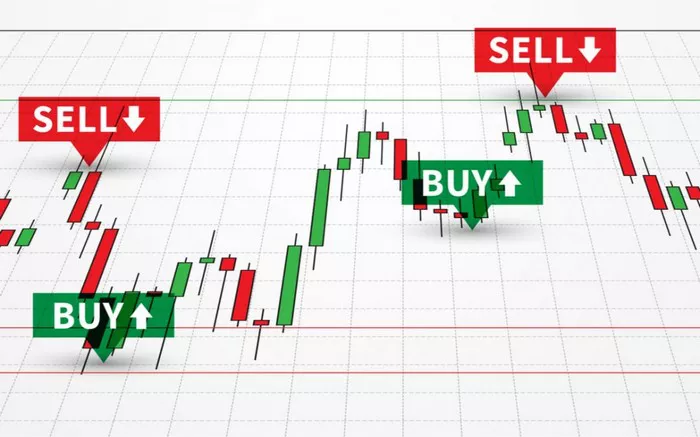Bitcoin, the pioneer of cryptocurrencies, operates on a decentralized network where transactions are recorded on a public ledger known as the blockchain. A key component of this system is the Bitcoin block, a collection of transactions that are verified and added to the blockchain by miners. Understanding the number of transactions in a Bitcoin block is crucial for comprehending how Bitcoin’s network functions, its scalability, and its impact on transaction fees and speed. This article delves into the intricacies of Bitcoin blocks, explaining the factors that influence the number of transactions per block and what it means for users and the network as a whole.
What Is a Bitcoin Block?
Before diving into the number of transactions, it’s essential to understand what a Bitcoin block is. A Bitcoin block is essentially a file that contains a list of Bitcoin transactions that have been processed during a specific time frame. Each block is added to the blockchain in a linear, chronological order, creating a continuous chain of blocks, hence the name “blockchain.”
Structure of a Bitcoin Block
Each Bitcoin block consists of several components:
Block Header: This contains metadata about the block, such as the block version, the previous block hash, the Merkle root (which summarizes all transactions in the block), the timestamp, the difficulty target, and the nonce.
Transaction List: This is a list of all transactions included in the block, beginning with the coinbase transaction, which rewards the miner for successfully mining the block.
Block Size: Bitcoin blocks have a size limit of 1 megabyte (MB), a parameter that directly affects the number of transactions that can be included.
How Many Transactions Can a Bitcoin Block Hold?
The number of transactions in a Bitcoin block is not fixed; it can vary depending on several factors. These factors include the size of the transactions, the block size limit, and the use of technologies like Segregated Witness (SegWit).
Block Size Limit
The most straightforward constraint on the number of transactions in a Bitcoin block is the block size limit, which is 1 MB. This limit was established by Bitcoin’s creator, Satoshi Nakamoto, as a measure to prevent spam attacks on the network. While 1 MB may seem small, it can accommodate a varying number of transactions depending on their size.
Average Transaction Size
Bitcoin transactions vary in size, typically ranging from a few hundred bytes to over a kilobyte. A standard Bitcoin transaction is around 250 bytes, but the actual size can vary based on the number of inputs and outputs involved in the transaction.
To calculate an approximate number of transactions that can fit into a 1 MB block, consider the following:
Small Transactions: If each transaction is around 250 bytes, a block could hold roughly 4,000 transactions (1,000,000 bytes / 250 bytes per transaction).
Large Transactions: If transactions are larger, say 500 bytes, a block would hold around 2,000 transactions.
See Also: 6 Cryptocurrencies That Are Gone Forever
Segregated Witness (SegWit)
SegWit is an upgrade to the Bitcoin protocol that was implemented in 2017. It separates the transaction data from the signature data, effectively reducing the size of individual transactions. With SegWit, more transactions can fit into a block, as it increases the effective block size without changing the actual 1 MB limit.
SegWit introduces a concept called block weight, which allows blocks to have an effective size of up to 4 MB in terms of transaction data, although the actual block size remains at 1 MB. This means that a SegWit-enabled block can hold more transactions compared to a non-SegWit block.
Factors Influencing the Number of Transactions per Block
While the block size and transaction size are primary factors, several other elements also influence the number of transactions that can fit into a Bitcoin block.
Transaction Type
The type of transaction significantly impacts its size. For example:
Single Input, Single Output Transactions: These are relatively small and straightforward, allowing more of them to fit into a block.
Multiple Inputs, Multiple Outputs Transactions: These are larger due to the additional data required, reducing the number of such transactions that can fit into a block.
Mempool Congestion
The Bitcoin mempool is where transactions wait to be confirmed by miners. When the network is congested, the mempool can become crowded with unconfirmed transactions. Miners prioritize transactions with higher fees, and they may choose to fill a block with fewer, higher-fee transactions rather than more lower-fee transactions. This can affect the total number of transactions in a block.
Block Size Increase Proposals
Over the years, there have been various proposals to increase the block size to accommodate more transactions, most notably Bitcoin Cash, which forked from Bitcoin in 2017 to increase the block size to 8 MB. However, in the Bitcoin network, the block size has remained at 1 MB, with enhancements like SegWit to optimize space.
Real-World Data: Average Transactions per Block
In practice, the number of transactions per Bitcoin block varies. On average, blocks contain between 1,000 and 2,500 transactions, depending on factors like transaction size, network congestion, and the adoption of SegWit.
Historical Trends
Historically, the average number of transactions per block has increased as the network has grown. Early blocks had fewer transactions, often just a handful, as Bitcoin was not widely used. As Bitcoin gained popularity, blocks began to fill up more consistently, especially during periods of high demand, such as the bull markets of 2017 and 2021.
Implications of Block Capacity
The number of transactions a Bitcoin block can hold has significant implications for the network, including transaction fees, confirmation times, and overall scalability.
Transaction Fees
When blocks are full, users must compete to have their transactions included by offering higher fees. This can lead to periods of high transaction fees, making Bitcoin less practical for small, everyday transactions. Conversely, when there is less demand, fees decrease as blocks have more room to include additional transactions.
Confirmation Times
Bitcoin’s block time is approximately 10 minutes, meaning that a new block is added to the blockchain roughly every 10 minutes. If the number of transactions exceeds the block capacity, unconfirmed transactions remain in the mempool, leading to longer confirmation times. Users can expedite confirmation by increasing their transaction fees.
Scalability Challenges
Bitcoin’s limited block size has been a point of contention in the cryptocurrency community. While it ensures that the network remains decentralized by allowing more participants to run full nodes, it also limits the number of transactions the network can process per second (TPS). This has led to debates and solutions like the Lightning Network, a second-layer protocol that facilitates off-chain transactions to improve scalability.
Future Prospects for Bitcoin Blocks
The future of Bitcoin blocks and their capacity to handle transactions is closely tied to ongoing developments in the Bitcoin network.
Potential Block Size Increases
While the 1 MB block size has been a core feature of Bitcoin, discussions about increasing the block size continue. However, any change would require consensus within the community and could potentially lead to a hard fork, as seen with Bitcoin Cash.
Layer 2 Solutions
Layer 2 solutions like the Lightning Network are designed to alleviate pressure on the Bitcoin blockchain by enabling faster and cheaper transactions off-chain. These solutions could effectively increase the number of transactions the Bitcoin network can handle without changing the block size.
Continued SegWit Adoption
As more users and services adopt SegWit, the effective capacity of Bitcoin blocks may increase, allowing more transactions per block and reducing congestion and fees.
Conclusion
The number of transactions in a Bitcoin block is influenced by various factors, including block size, transaction size, the use of SegWit, and network congestion. While the block size limit of 1 MB restricts the total number of transactions, technologies like SegWit and Layer 2 solutions offer avenues to optimize and increase Bitcoin’s transaction capacity. Understanding these dynamics is essential for anyone involved in the Bitcoin network, whether as a user, miner, or developer, as it directly impacts transaction fees, confirmation times, and the overall scalability of the Bitcoin network. As the network continues to evolve, so too will the strategies for maximizing the efficiency and capacity of Bitcoin blocks.
Related topics:

























